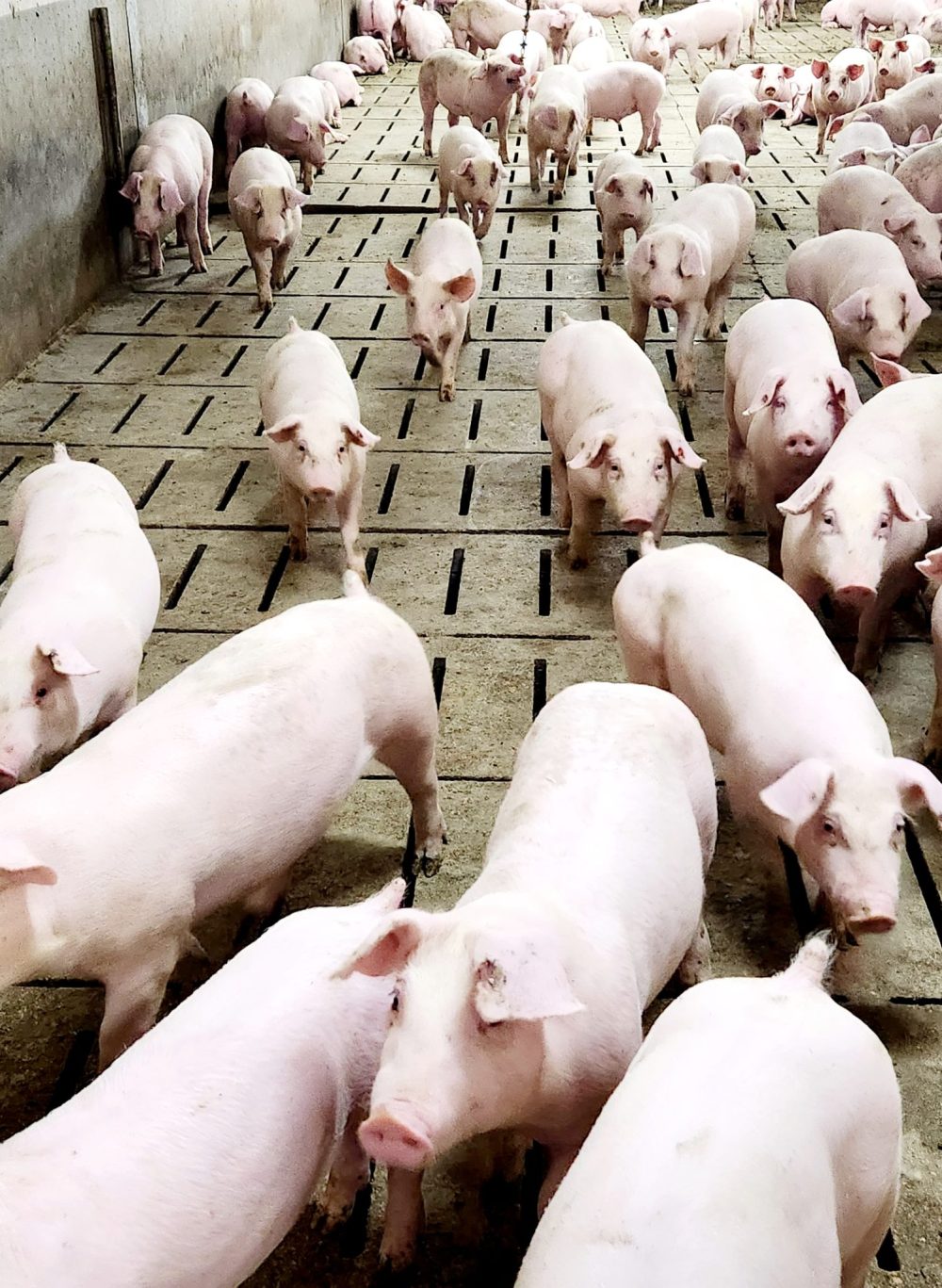Province creates plan for African Swine Fever, Manitoba pork producers hopeful
Advertisement
Manitoba pork producers welcome the province’s efforts to develop a plan for addressing potential African Swine Fever outbreaks.
On Aug. 13, the provincial agriculture department released a request for proposal for a consultant to help continue developing Manitoba’s African Swine Fever Integrated Emergency Response Plan.
The selected consultant would work closely with Manitoba’s chief veterinary office and the Manitoba Pork Council, the proposal request stated.

Scott Peters, a Randolph-based pork producer, described a potential African Swine Fever outbreak in one word — horrendous.
He has nearly 15,000 pigs on his farm, and employs 50 people. If an outbreak happened, it would cause borders to shut down and wide-spread culls, halting the majority of his pork sales, he said. Peters trucks 75 percent of his pigs into the U.S. and those subsequently are sold across the U.S., Mexico, Japan and Canada. Each week, he ships 2,000 pigs across the border.
“We would sustain incredible hardship going forward. It’s not just to the animals, but also it’s far reaching,” he said.
While African Swine Fever poses no threat to people, it kills 100 percent of infected pigs. There’s no treatment or vaccine for the disease. African Swine Fever outbreaks have happened throughout Asia, Europe and Africa. In 2018, China experienced its first outbreak, spurring large-scale culls of pigs.
The disease has never been found in Canada or the U.S. If an outbreak happened in Manitoba, even a three-month closure could cause serious losses in revenue for farmers and production plants, according to a provincial website. If the outbreak lasted a year, it would take at least three years for the industry to fully recover, it stated.
Manitoba’s pork industry contributes $2.3 billion to the province’s economy annually. The hog sector employees nearly 22,000 people, according to Manitoba Pork. Manitoba, Quebec and Ontario produce 90 percent of pork in Canada. The majority of Manitoba pork is exported to other nations, with Japan being the top importer.
Because hog producers have finely tuned pig growth cycles and transportation, any type of outbreak would jeopardize the entire production system, Peters said. A potential outbreak could also put animal welfare at risk because his facilities aren’t equipped to house pigs long term,
“There’s no room for error or stumbling blocks along the way. There’s no extra room anywhere,” Peters said. “There’s no extra barns where you can just store them or anything like that. It just becomes the biggest mess up.”
He appreciates the collaboration and work the province has done to develop the outbreak plan. Being prepared in Manitoba can help producers respond quickly if the disease arrives in the province or elsewhere in Canada, he said.
“Everything that we’ve done to this point is helpful, so that if it does come, it’ll help mitigate some of the stress level,” he said. “We can’t totally prepare for it, but we can certainly be as prepared as we can be.”
Work on the plan began in 2018, alongside the federal Canadian Food Inspection Agency, said Manitoba’s chief veterinary officer Glen Duizer. The new plan will coordinate with the national response to potential outbreaks, including assisting with disease tracking, euthanizing animals and opening laboratories to federal officials, he said.
The Canadian Border Services Agency already bans individuals from bringing any fresh, dried or cured meats into the country, and doesn’t allow any pigs or pork products enter from countries infected with the disease.
“Whether the disease is in Manitoba or it’s elsewhere in the country, we will initiate that response because it will have an impact on the health and welfare of the Manitoba swine herd,” Duizer said.
African Swine Fever can spread through infected pigs, feed, or meat, which is why quick actions are needed if an outbreak happens, he said.
Manitoba has also collaborated with Alberta, Saskatchewan and Ontario when creating the outbreak plan. Duizer said seeking out a third-party consultant is the final step for the plan. The province’s goal is to get feedback from producers and industry representatives on the plan before its released, he added. The plan is expected to be finished in March 2026.
“To say we’ve managed to keep it (the disease) out this far, it really speaks loudly to the work that’s been put in place,” Duizer said. “But that risk hasn’t gone away.”
Cam Dahl, general manager for Manitoba Pork, is pleased with the work both levels of government have done to create plans to address the disease. The goal needs to be focused on resuming trade and reopening borders quickly, he said.
Manitoba Pork was included in the plan’s creation and helped form agreements with trading partners, like the U.S., on disease response, Dahl said.
“This is an example of industry and governments working together in a collaborative way to plan for potential negative outcomes, and that’s a good thing. It’s how it should be done,” he said.
